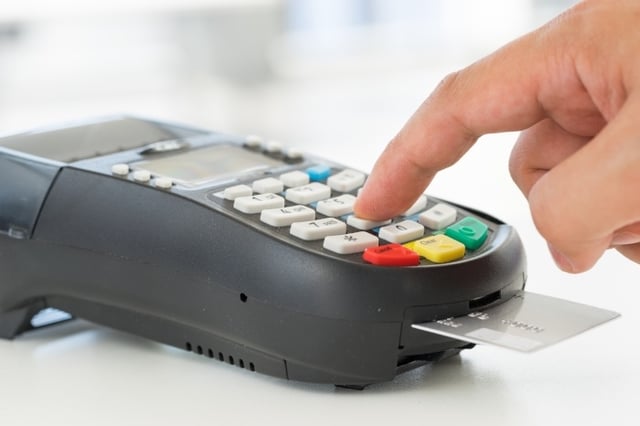 The U.S. Payments Forum announced in its 2017 Winter Market Snapshot that there has been steady progress in the U.S. migration to chip payments, with 9 out of 10 Americans commonly using chip cards at the approximately one-third of U.S. merchant locations enabled to accept chip payments. "Steady progress" is one way to look at it. Another way is that the deadline for POS terminals to become EMV compliant was October 1, 2015 — well over a year ago — and the findings tell us only one-third of merchant locations have made the switch so far.
The U.S. Payments Forum announced in its 2017 Winter Market Snapshot that there has been steady progress in the U.S. migration to chip payments, with 9 out of 10 Americans commonly using chip cards at the approximately one-third of U.S. merchant locations enabled to accept chip payments. "Steady progress" is one way to look at it. Another way is that the deadline for POS terminals to become EMV compliant was October 1, 2015 — well over a year ago — and the findings tell us only one-third of merchant locations have made the switch so far.
So what's slowing them down and how can it be fixed? Let's take a look.
Why More Merchants Aren't Accepting EMV Payments
At face value, rolling out EMV-enabled POS terminals should certainly be top priority for merchants. While each EMV-chip enabled POS terminal is approximately $500 to purchase, that cost pales in comparison to the potential repercussions of not offering the more secure option.
Now that the letter of the law dictates that card-present fraud liability is the responsibility of the least EMV-compliant party in a fraudulent transaction, the cost of not implementing EMV could be astronomical.
But the reality is, becoming EMV-compliant isn't as simple as buying a machine with the right hardware. Merchants also have to 1) invest in either newly developed software or integrate software from a third-party into their back office systems to activate the EMV-enabled POS terminal, and 2) undergo a certification process with each of the card networks. And that second step is where the real holdup is — credit card networks have become overwhelmed by requests for certification, and backlog has caused merchants to wait as long as six months or more to roll out the new system.
The Blame Game
It's a classic case of he said/she said. If you ask the credit card companies, merchants should have begun their migration to EMV-enabled POS terminals earlier to avoid finding themselves in a holding pattern waiting for their certification. Go to the merchants, and they say the credit card companies should have anticipated a surge of certification requests and staffed up for the occasion.
The argument has escalated all the way to the courts, with several retailers suing credit card companies over the new regulations for in person payment. And while it will be interesting to see how all of those lawsuits ultimately shake out, the more important question is: When will the migration to EMV-enabled transactions shift from a measly third to a majority of merchants?
A Matter of Time
The EMV Migration Forum believes that 90 percent of payment terminals will be EMV-enabled by the end of 2017. Optimistic? Maybe. But let's hope they're at least close to the bull's-eye with that estimate.
While the transition to EMV payments may not be painless, it's a necessary evil in the fight against fraud. And, it's working. MasterCard found that in-person fraud went down 54% from April 2015 to April 2016 among chip-enabled merchants. Europe has enjoyed the benefits of this technology for well over a decade. It's high time we got with the program — so let's hope credit card companies and merchants get those queues moving. After all, at the end of the day, fraudsters are the real enemy.

